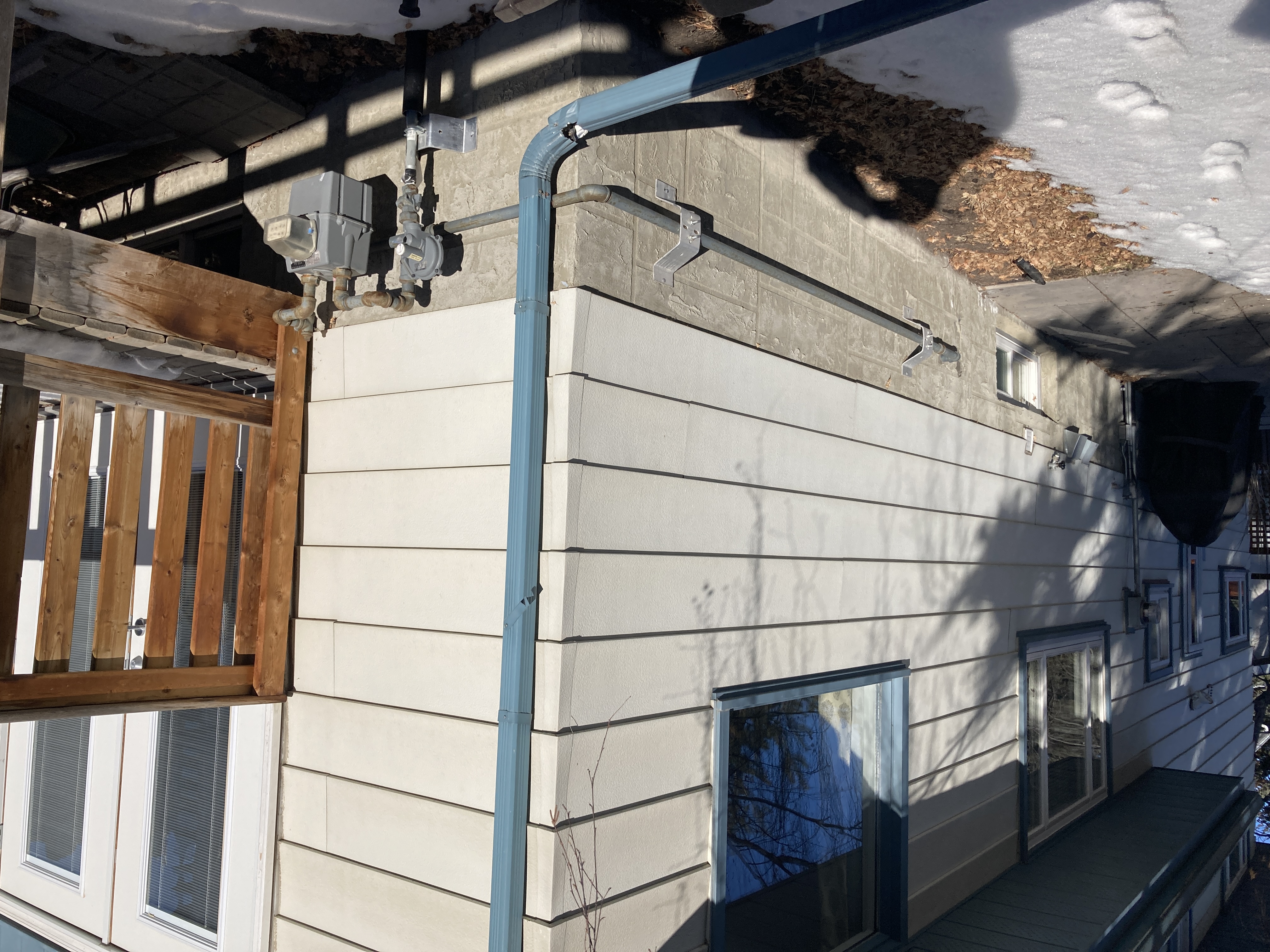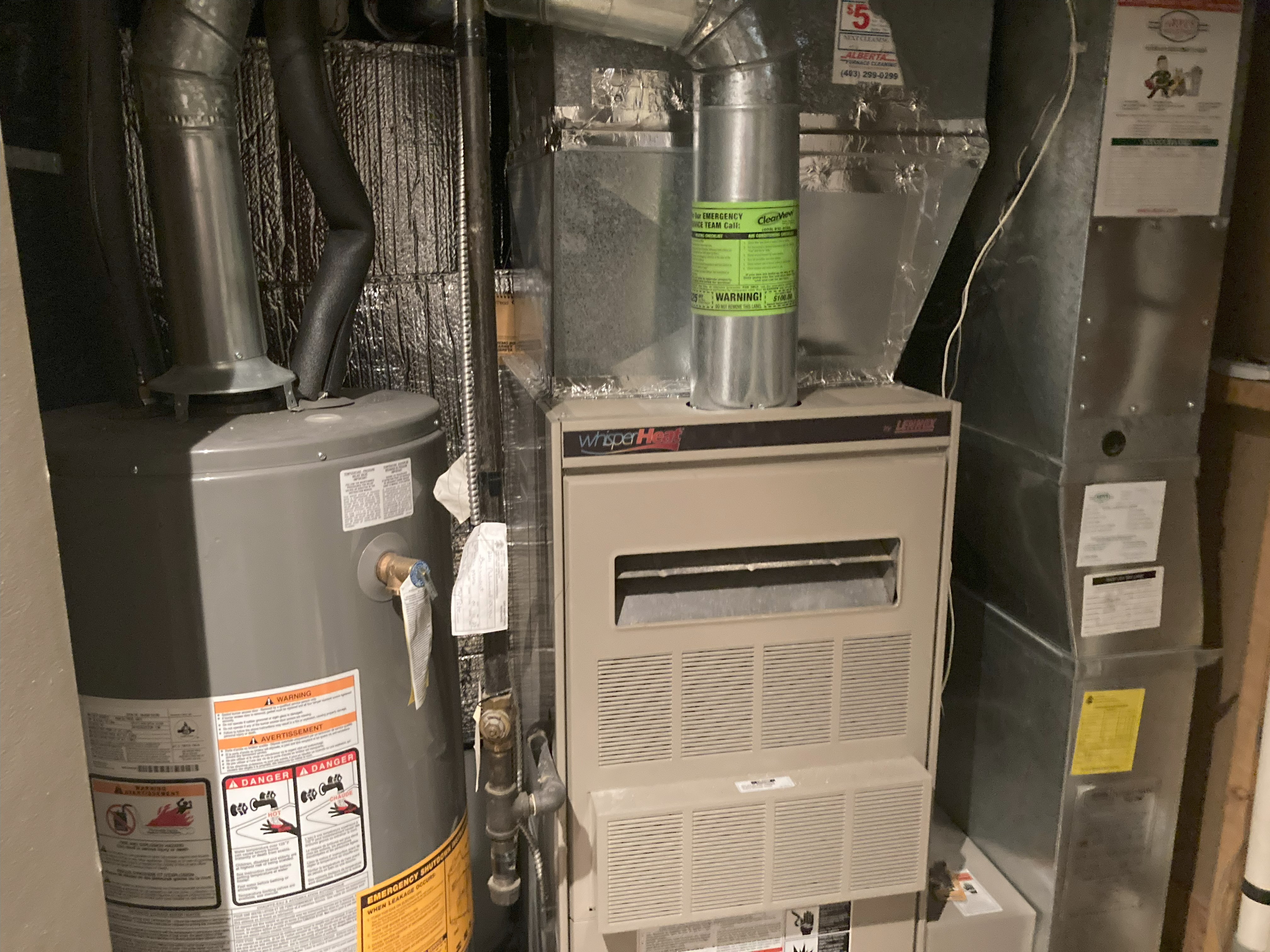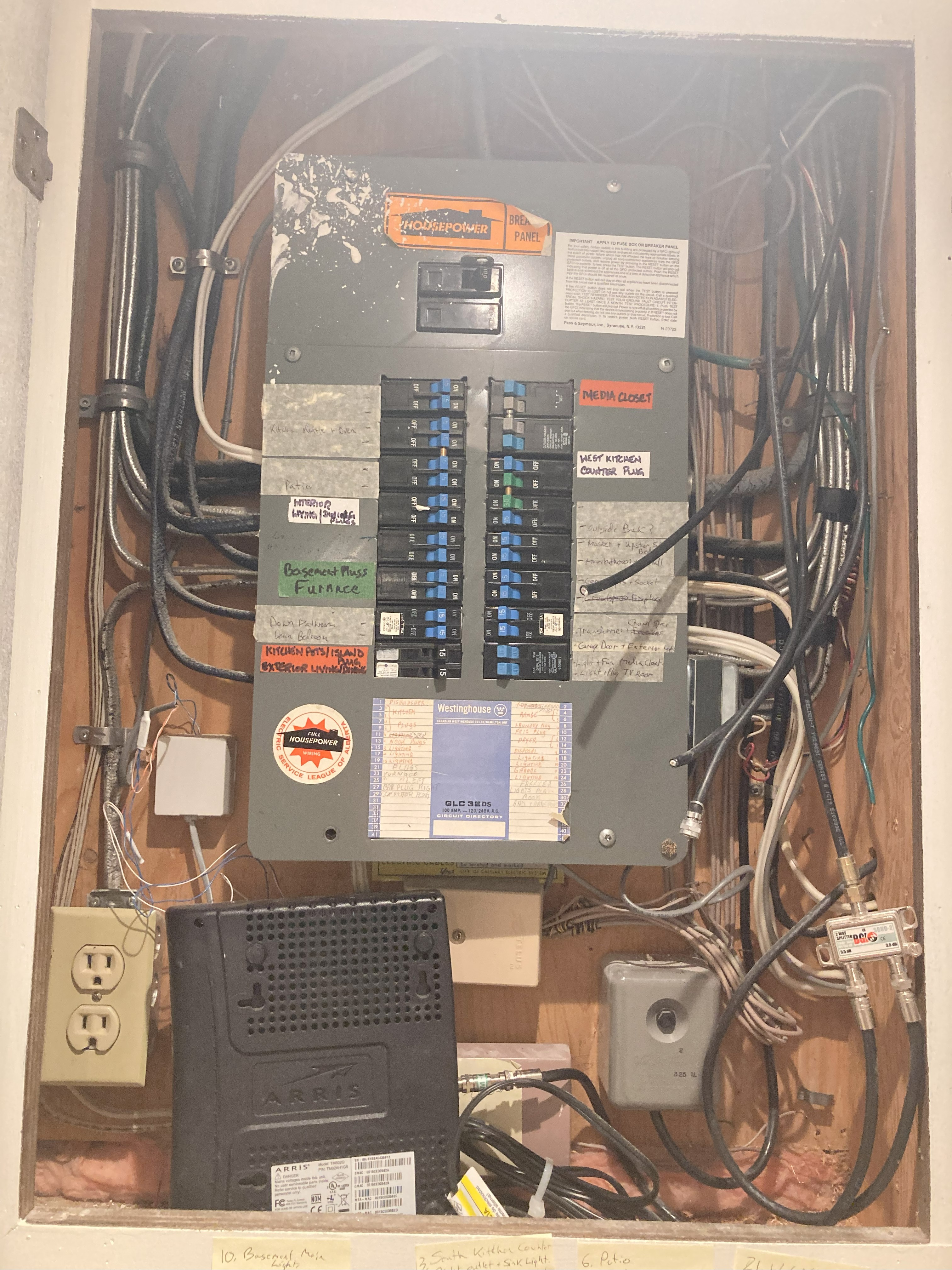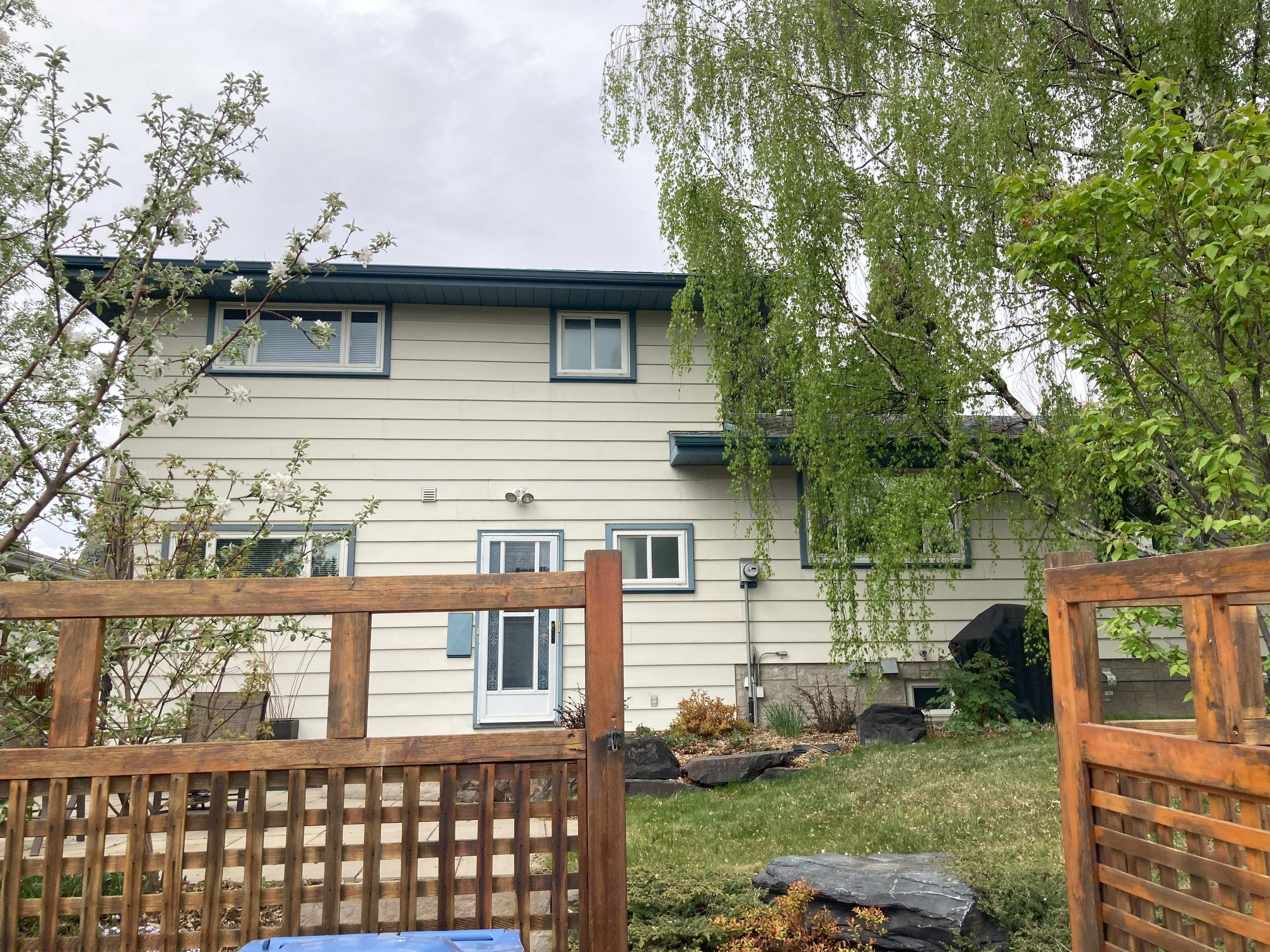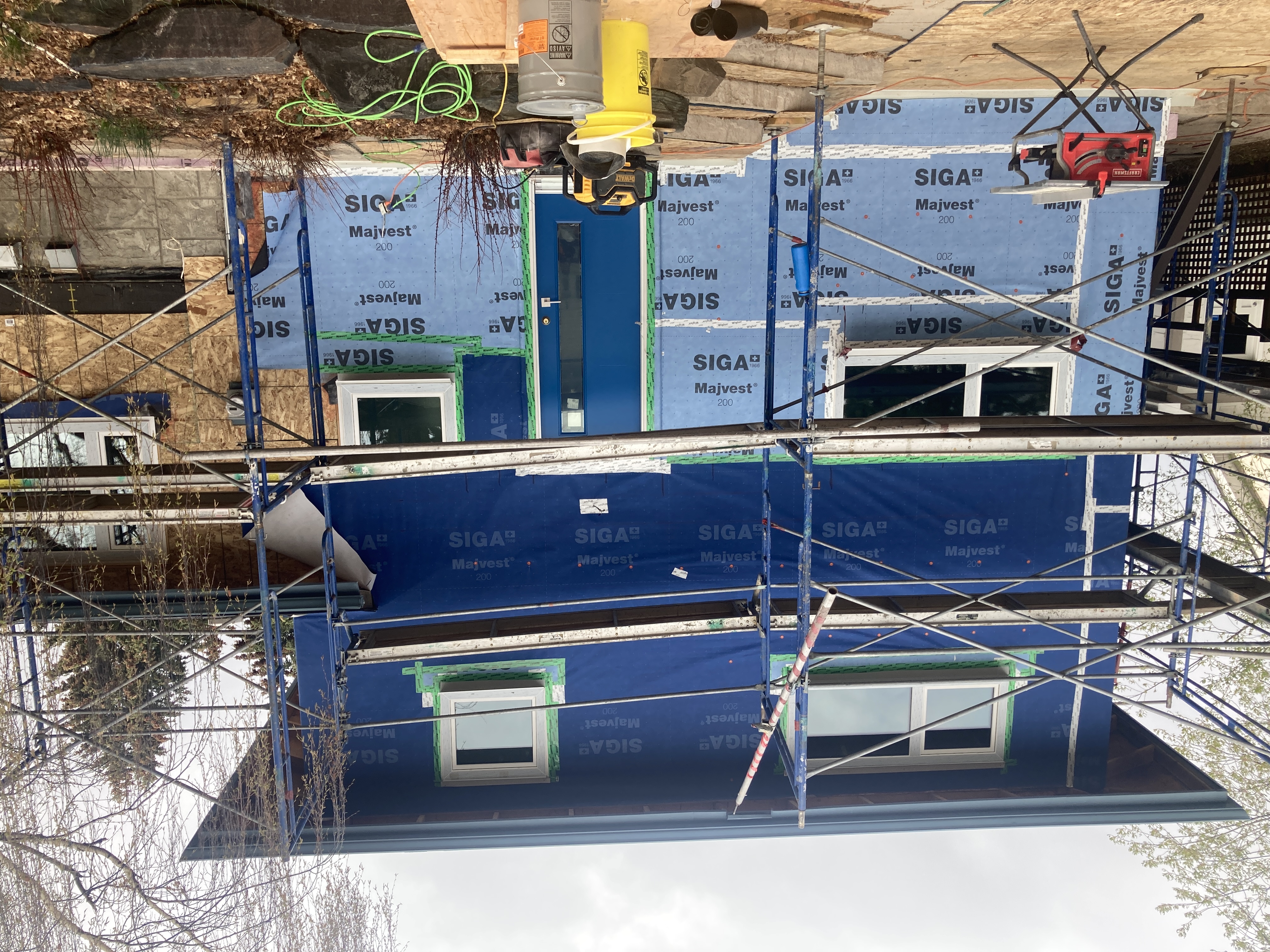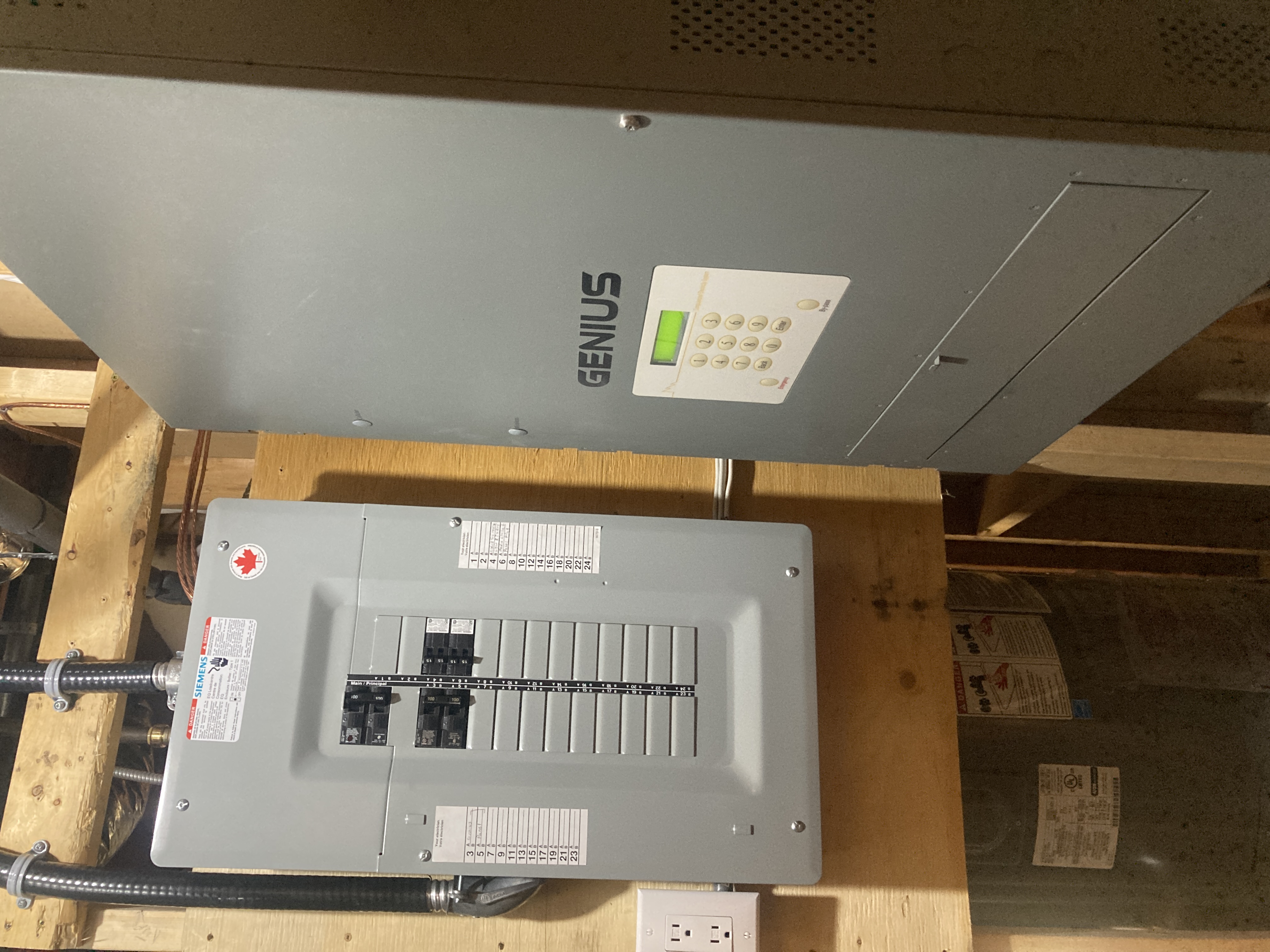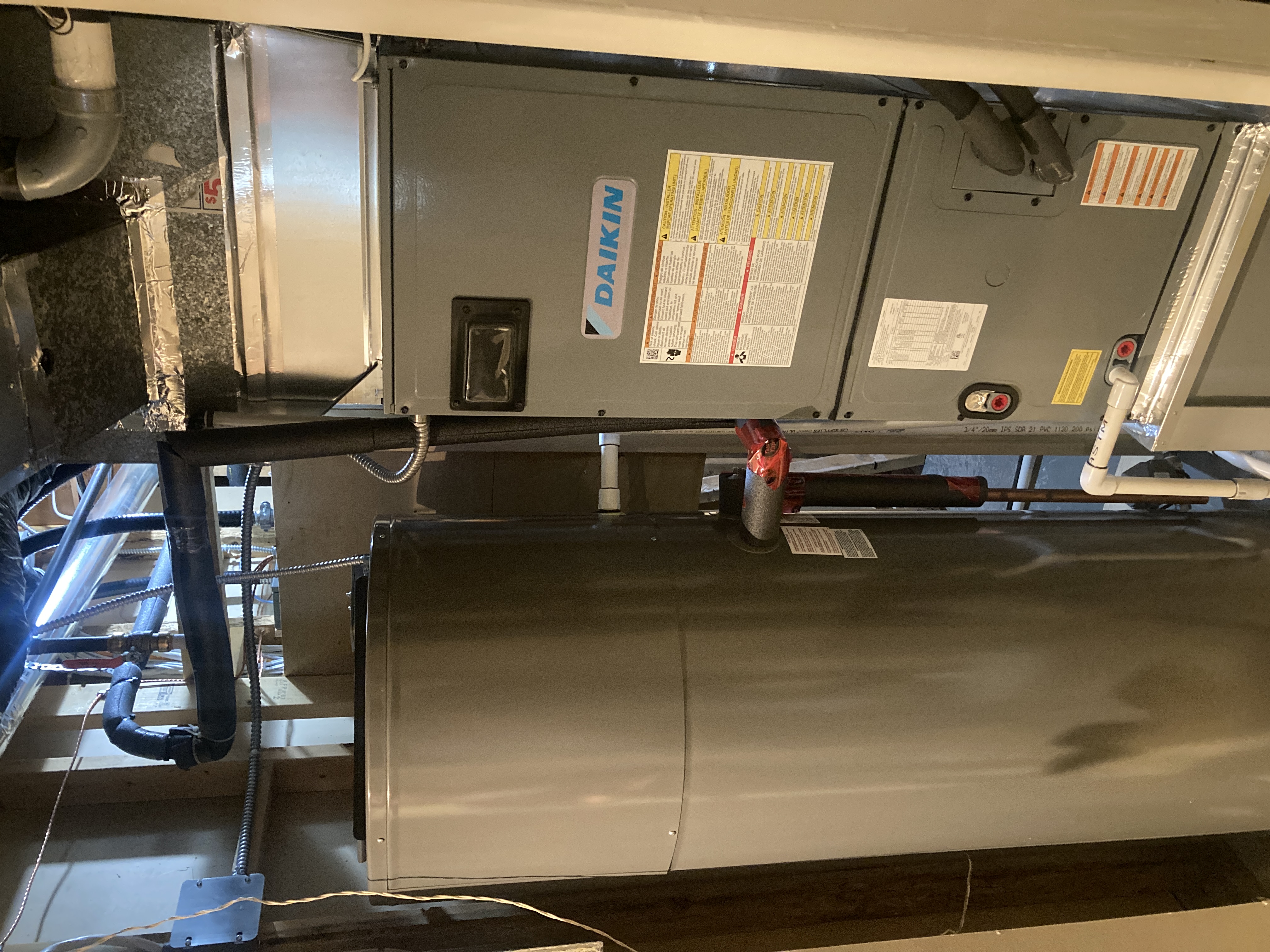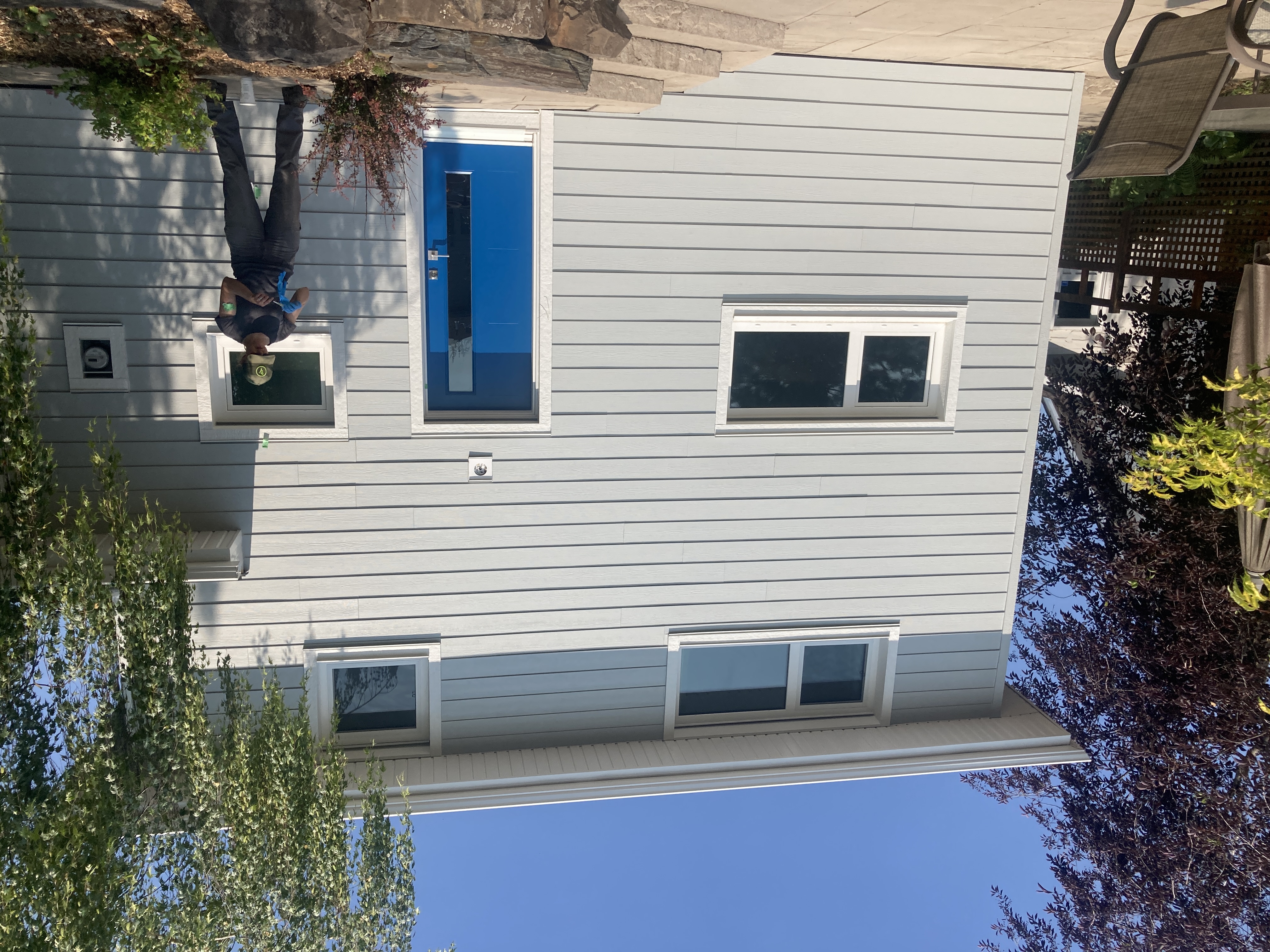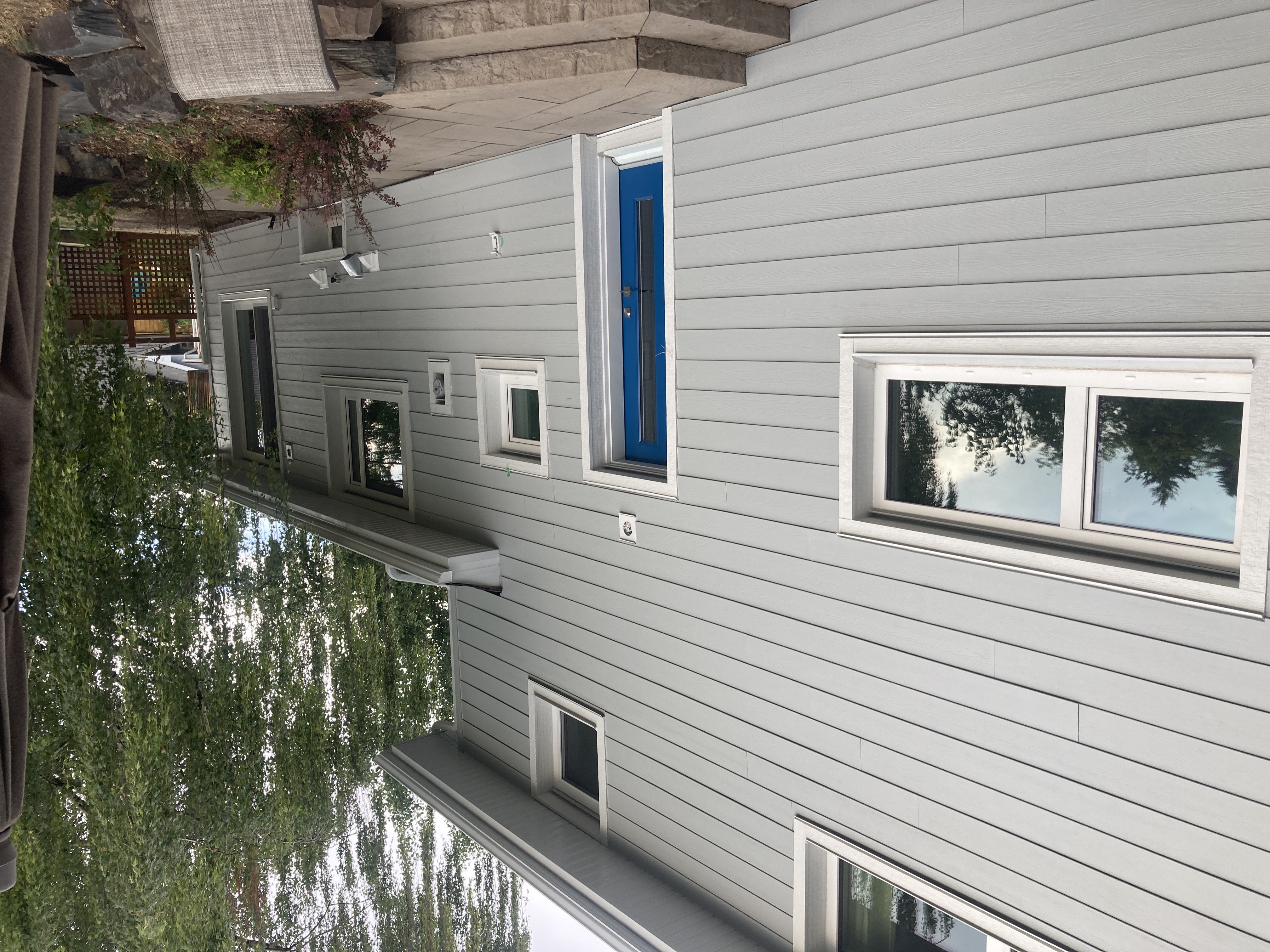Project Description
Planning the Retrofit
Solar Home Inc. designed the retrofit to create a net-zero ready envelope that would improve comfort and efficiency, modernize the building’s appearance, and increase property value. Since the homeowners remained in the home during construction, the crew prioritized an exterior-first approach to minimize disruption.
They used a Hydrovac to expose the foundation wall, allowing for the installation of two layers of 2" XPS foam board to the exterior foundation wall, increasing the overall thermal resistance to R-30.
Due to limited attic space, the team applied spray foam insulation to boost the assembly’s thermal resistance and reduce air leakage. They sealed the attic and brought the insulation level up to R-51.
A 2×6 frame increased the above-grade walls to R-30, and older windows were replaced with durable European style windows to future-proof the home.
After the envelope was complete, the final step was designing mechanical systems accordingly to avoid oversizing and short cycling.
Before & After
General
|
|
Before |
After |
Building Condition
|
Before
Original metal siding, mixed windows (some original, others roughly 20 years old), slightly dated appearance. |
After
Hardie board siding, brand new InnoTech window system, modernized and clean aesthetic. |
Comfort
|
Before
No serious concerns, slightly more noise than a modern build. |
After
Reduced noise from triple pane windows, improved thermal comfort, improved building air quality. |
Envelope
|
|
Before |
After |
Ceiling/Attic Assembly
|
Before
Asphalt roofing material, 3/8″ OSB plywood, 2×4 trusses 24″ on center, R-24 blown-in insulation, 6 mil polyethylene vapour barrier, 3/8″ plywood decking, 1/2″ drywall interior finish. |
After
Original insulation removed and closed cell spray foam insulation added to attic floor with blown in fiberglass insulation on top (totaling R-51 nominal) |
Ceiling/Attic Assembly Effective Thermal Resistance
|
Before
R-23 |
After
R-44 |
Foundation Wall Assembly
|
Before
8″ concrete wall, 3/4″ airgap, 2×4 framing 16″ on center, R-12 fiberglass batt insulation, 6 mil polyethylene vapour barrier, 1/2″ drywall interior finish. |
After
4″ XPS board (R-20) added to exterior down to the footing. |
Foundation Wall Assembly Effective Thermal Resistance
|
Before
R-10 |
After
R-30 |
Wall Assembly
|
Before
Steel siding, 3/8″ OSB sheathing, 2×4 framing 16″ on center, R-12 fiberglass batts, 6 mil polyethylene vapour barrier, 1/2″ drywall interior finish |
After
Hardie board siding, 6″ Roxul rock wool batts, 20 mil SIGA Majvest® 200 Facade Membrane, installed over existing assembly. |
Wall Assembly Effective Thermal Resistance
|
Before
R-12 |
After
R-30 |
Windows and Doors
|
Before
Most windows replaced in the late 90’s early 2000’s, dual pane, Low-E (~R-2.5). A few original windows remained. |
After
New Innotech European style, triple pane, Low-E windows (~R-6) . One dual pane Low-E and one original window remains. |
Air Tightness
|
Before
3 ACH50 |
After
2.06 ACH50 |
Air Sealing
|
Before
Typical for age of home. |
After
Combination of High performance tapes & membranes & house wrap. Spray foam insulation on ceiling decking, spray foam insulation on window frames. Additional framing and siding improvements. |
Mechanical & Electrical
|
|
Before |
After |
Heating
|
Before
Natural gas furnace (Induced draft with pilot, 80% AFUE), Co-Vented with DHW. |
After
2-ton Daikin heat pump (9.1 HSPF), backup resistive electric coil. |
Cooling
|
Before
None |
After
2-ton Daikin heat pump |
Hot Water
|
Before
Natural Gas Storage Tank With Pilot Light (151L, 0.55 EF) |
After
AO Smith heat pump water heater (189L, 0.90 EF) |
Ventilation
|
Before
Naturally aspirated, no whole home system. |
After
Entropy Recovery Ventilator (ERV), 77% Efficiency. |
Renewables
|
Before
None |
After
Net Zero ready, Smart Electrical Panel 100A (EV Ready, Solar Ready) |
Electrical Service
|
Before
100 Amps |
After
100 Amps |
Mechanical Other
|
Before
No Data |
After
New 100 amp Genius smart panel installed |
Annual Energy Usage
|
|
Before |
After |
Total Annual Consumption
|
Before
148 GJ |
After
43 GJ |
Total Net Consumption
|
Before
148 GJ |
After
43 GJ |
Energy Use Intensity
|
Before
165.1 kWh/m2/a |
After
47.97 kWh/m2/a |
Annual Heating Demand Intensity
|
Before
107.32 kWh/m2/a |
After
13.91 kWh/m2/a |
Annual Cooling Demand Intensity
|
Before
0 kWh/m2/a |
After
0 kWh/m2/a |
Annual Electricity Consumption
|
Before
7500.01 kWh |
After
11944.45 kWh |
Annual Natural Gas Consumption
|
Before
121 GJ |
After
0 GJ |
Light and Appliance Energy Consumption
|
Before
11.84 GJ |
After
11.61 GJ |
Other Electrical Consumption
|
Before
13.32 GJ |
After
13.76 GJ |
Space Cooling
|
Before
0 GJ |
After
0 GJ |
Space Heating
|
Before
96.2 GJ |
After
12.47 GJ |
Ventilation
|
Before
0 GJ |
After
0.86 GJ |
Water Heating
|
Before
26.64 GJ |
After
4.3 GJ |
Carbon Emissions*
|
|
Before |
After |
Annual Operational Carbon Emissions – Electricity
|
Before
3675 KgCO2e |
After
5852.78 KgCO2e |
Annual Operational Carbon Emissions – Natural Gas
|
Before
6364.66 KgCO2e |
After
0 KgCO2e |
|
*Based on emissions values from Canada’s Official Greenhouse Gas Inventory 2022 Emissions Values
|
Photos
Pre Retrofit
During Construction
Post Retrofit

